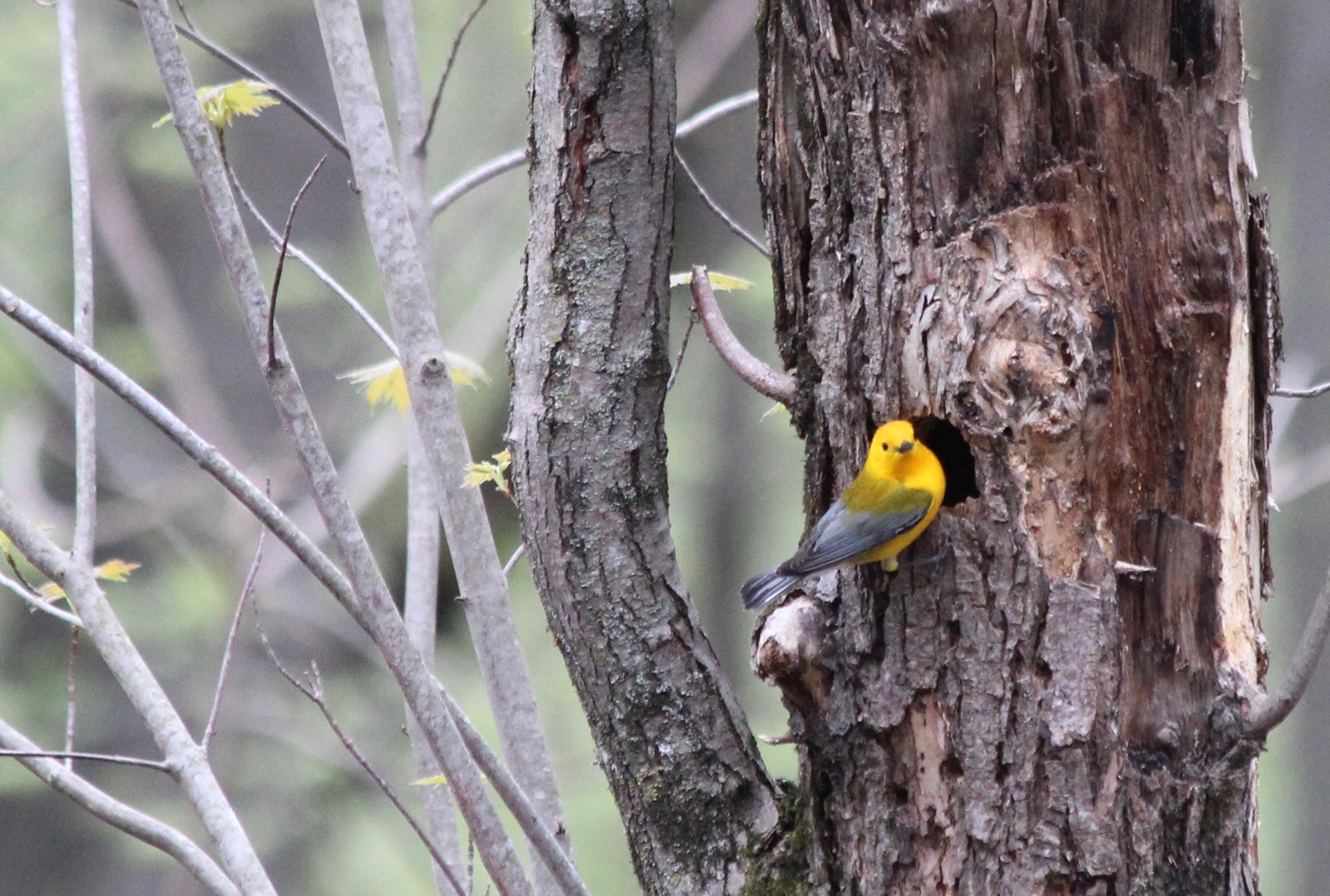
Astronomy
On Tuesday the 26th look for the planet Mars to the right of the Moon in the evening sky.
Birds
Many of the birds on the prairie through the summer will soon fly south for the winter. Try to catch a last glimpse of meadowlarks, bluebirds, kingbirds, bobolinks and others before they leave! Meadowlarks and Bluebirds will travel to the southern U.S. and Mexico, Kingbirds fly to the forests of South America, and Bobolinks winter in the grasslands of South America.
Mammals
Gray squirrels prepare for winter by gathering black walnut seed pods and acorns. Red squirrels are more likely to gather seeds from conifers. If you see the core of a spruce cone on the ground, chances are a red squirrel has been at work harvesting the seeds. Look for both gray and red squirrels at Afton.
Amphibians and reptiles
A few tree frogs, perhaps juveniles, are practicing their loud trilling call in the morning and evening hours. Look for them clinging to windows with their sticky toes in the early morning hours. Tree frogs can change color from gray to green and also shades of brown depending on their surroundings. Look for snakes basking on trails – be careful not to step on them, and be especially careful not to run over them if you’re riding your bike.
Insects
Monarchs, Painted Ladies, American Ladies, and Great Spangled Fritillaries are four species of butterflies you may see at Afton. Painted Ladies and American Ladies look very much alike; Painted Ladies have four “eye-spots” on their hind wing, while American Ladies have only two. All are “brush-footed” butterflies. Their two front legs are very short and have brush-like bristles on them. When you see one perched, it may look like it only has four legs and not six.
Look for damselflies, dragonflies, and spreadwings on sunny days. Most damselflies rest with their wings held together, while dragonflies rest with their wings spread open. And spreadwings, which are a group of damselflies, keep their wings spread out at an angle!
Plants
On the prairie look for Compass Plants, Prairie Onions, Sawtooth Sunflowers, and Canada Goldenrod.
In wet areas look for Blood Milkwort, Blue Lobelia, Cardinal Flower, and Jewelweed, which is a favorite of hummingbirds. Hummers are fueling up for their long migration this fall, so if you have a hummingbird feeder this is a good time to put it out. They will travel over a thousand miles to Central America, sometimes going as far as 500 miles in one flight session.
Weather observations
Here are some weather observations for this week from past years.
| Friday, August 22 | 2023: record high 98°; 2022: Pleasant day with temperature in the 70s; 2020: ½” of rain overnight, then hot and sticky |
| Saturday, August 23 | 2023: record high 98°; 2015: gusty winds and high only in the 60s |
| Sunday, August 24 | 2009: sunny and pleasant, in the 80s; 2021: 1” rain |
| Monday, August 25 | 2013: record high of 96° |
| Tuesday, August 26 | 2022: high around 80° and sunny; 2021: cloudy in the morning, with a thunderstorm mid-afternoon and another in the evening; 2013: record high of 97°; 2005: record rainfall of 2.04 inches |
| Wednesday, August 27 | 2022: thunderstorm in the evening; 2016: drizzle through day with high of 65° |
| Thursday, August 28 | 2022: Cloudy and in the 70s, but muggy; 2020: thunderstorm early, with ½” rain |
Photo/Image credits
All photos copyright Nina Manzi, except:
- Dean Lokken: Eastern Kingbird
- Bill Marchel, MN Conservation Volunteer: Meadowlark
- Gary Sater: Eastern Bluebird
- Allen Blake Sheldon, MN Conservation Volunteer: Bobolink
































